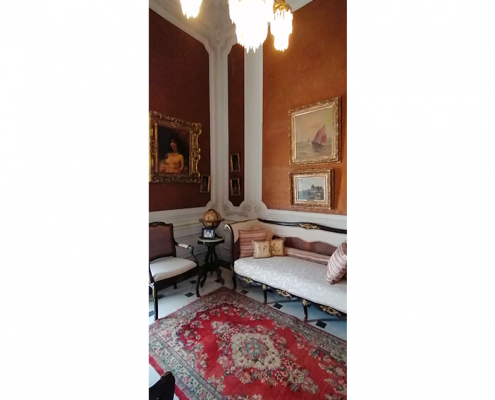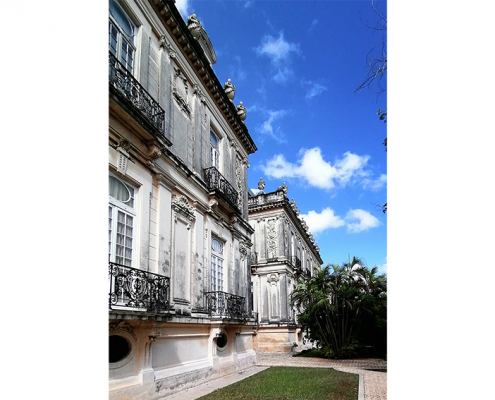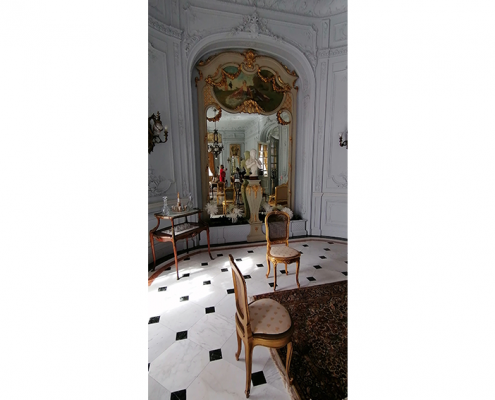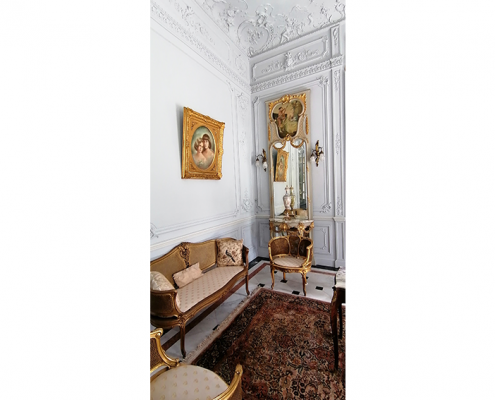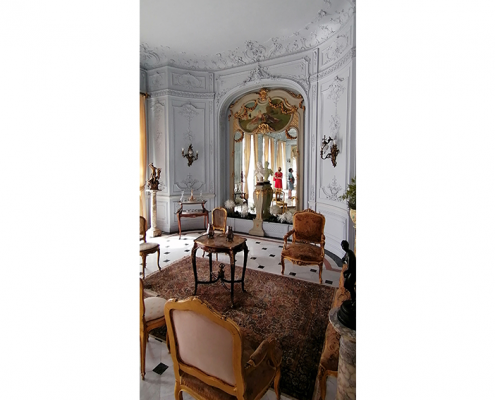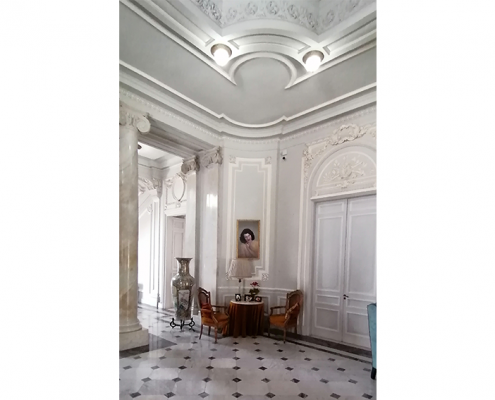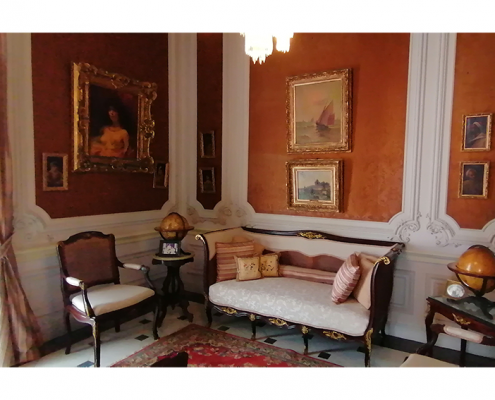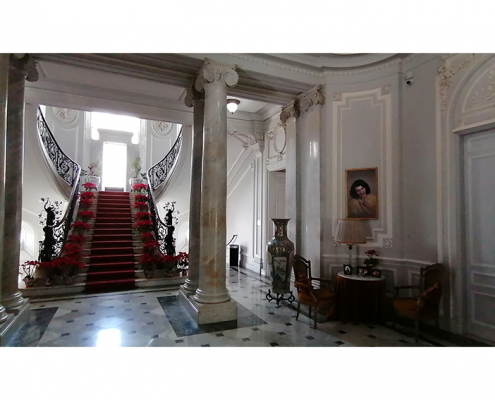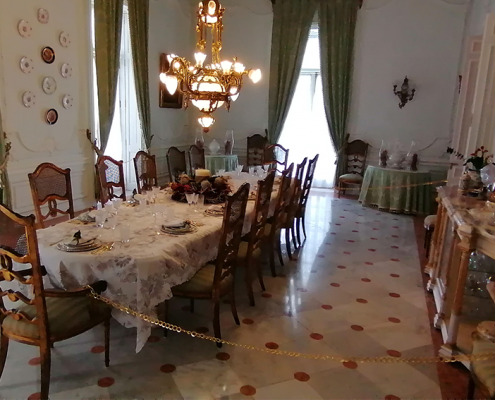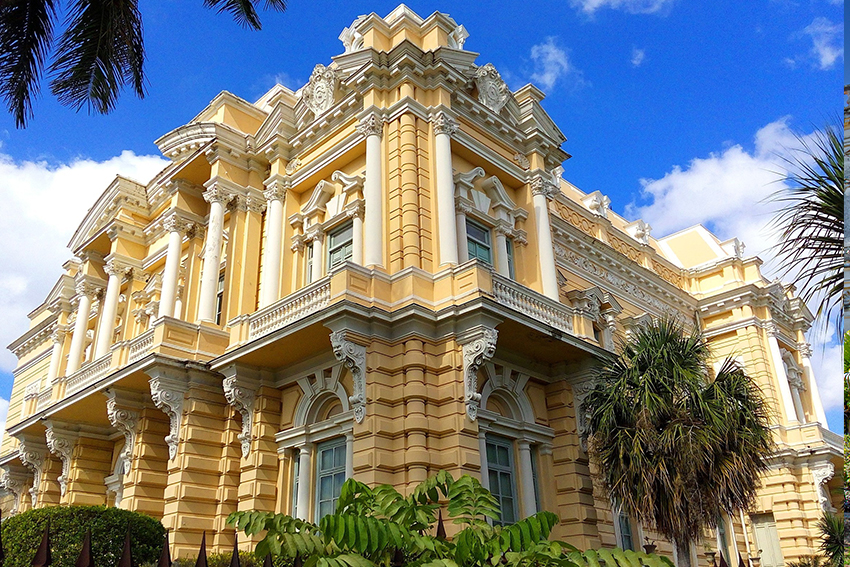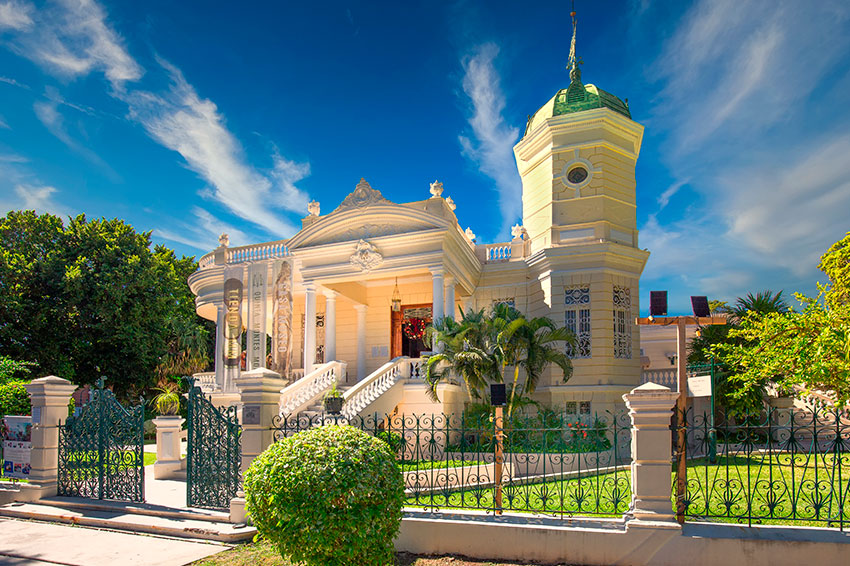A Glimpse of Merida’s Mansions from the Era of Green Gold
If you are heading for Merida, capital of the Yucatan, you’ll want to spend time strolling along Paseo de Montejo, the wide tree-lined boulevard to the north of the main square and Calle 60.
Inspired by the Champs-Élysées, this leafy boulevard dates from 1888, and is lined with palatial mansions built in the days of the henequen boom of the late 19th century and early 20th century. During this time, local families grew wealthy from the cultivation of henequen or sisal, a native agave which yields a tough fiber used to make rope, twine and sacking. They built homes in the style of Parisian town houses or chateaus and there is even one with a minaret. While many now house banks or offices and the most famous of all, the Palacio Canton is the Regional Anthropology and History Museum, several are open to show visitors what life was like during the heady days of henequen when Merida was one of the world’s most prosperous cities.
Montejo 495 Casa Museo
Montejo 495 is one of the famous Casas Gemelas at the beginning of Paseo de Montejo. In 1904, henequen baron Ernesto Cámara Zavala and his sister Maria Cámara Zavala commissioned French architect Gustave Umbdenstock to build the twin mansions. Building began in 1906 and they were inaugurated in 1912. They were among the first houses in the Yucatan to have electricity and originally had huge tropical gardens, orchards and stables.
A guided tour of the first mansion on the boulevard is a fascinating insight into the history of a beautiful home dating from the era of green gold. Visitors see airy rooms with high ceilings filled with original turn-of-the-century furniture and inlaid cabinets, porcelain, French tapestries, Persian rugs, glass, art and sculptures.
In 1964, the twin houses were purchased by the Barbachano Herrera family and many of their favorite antiques, family paintings and photos are also on display, including one of President John F. Kennedy who was a family friend. He never visited the house, but Jackie Kennedy is said to have stayed after his death.
With its wide staircases with delicate iron railings, marble floors, columns, Baccarat lamps, stained glass windows and crystal chandeliers, this house has timeless elegance and is listed as a French Heritage Overseas Building.
Montejo 495 is open from Tuesday to Sunday, 9 a.m. to 5 p.m. The guided tour currently takes visitors through rooms on the main floor and to the kitchens and servants’ quarters. There are plans to open the upper floors with bedrooms and the mezzanine with its own private theater in the future.
Palacio Cantón
The largest of all the mansions in Paseo Montejo is Palacio Canton, home of the Regional Anthropology and History Museum where ceramics, figurines, jewelry and other artifacts unearthed at the state’s many archaeological sites are on display.
This imposing mansion was built between 1904 and 1911 to the design of the Italian architect Enrique Deserti, (the Peon Contreras Theater on Calle 60 is also one of his designs) to be the family home of General Francisco Cantón Rosado, the former State governor.
In the Beaux Arts style, it has neoclassical and baroque architectural features. Inside, there are statues, art and furniture dating from the turn of the 19th century that were shipped to Merida from France, Italy and Germany.
El Minaret
Famous for its Moorish-inspired minaret, this mansion is open every evening for guided tours which culminate with views of Paseo de Montejo from the tower. There is a bazaar showcasing the work of local designers and artists and the mansion also hosts frequent live music performances.
Quinta Montes Molina
A short walk north along Paseo de Montejo and set in beautiful gardens, Quinta Montes Molina dates from 1902. In 1915, it was purchased by local businessman Avelino Montes Linaje and is still owned by the Montes Molina family to this day.
Guided tours of the house show visitors rooms full of original furniture, Baccarat crystal chandeliers, Murano glass, paintings and the family china. Porcelain and alabaster statues grace the halls and corridors. Sepia photos, art deco pieces, clothing, musical instruments, clocks and even old telephones paint a picture of family life over the years. Downstairs in the basement are the kitchen, the wine cellar, laundry and the servant’s quarters.
Open Monday to Friday, 10 a.m. to 6 p.m.
Plan a Merida trip with Thomas More Travel
Thomas More Travel offers day trips and overnight stays to Merida and tour desk representatives will help you if you would like to plan a longer trip.

